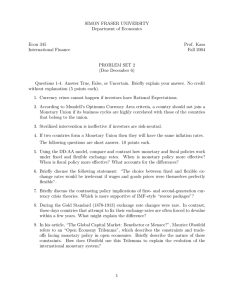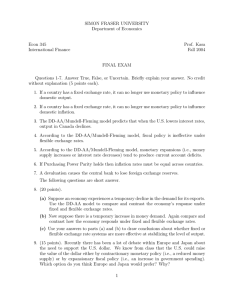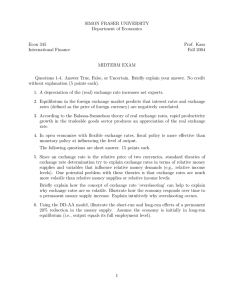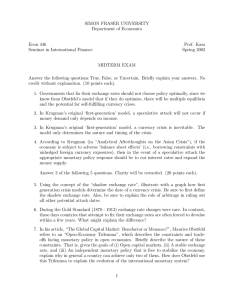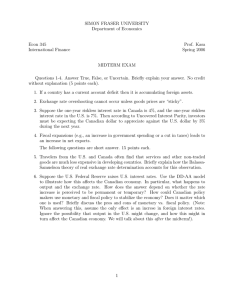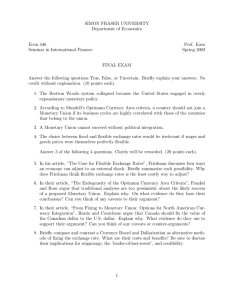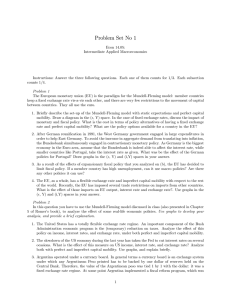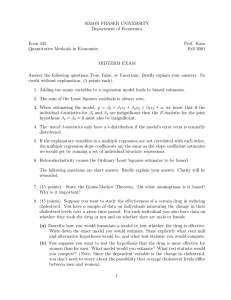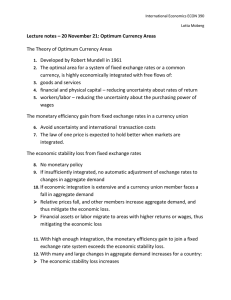SIMON FRASER UNIVERSITY Department of Economics Econ 345 Prof. Kasa
advertisement
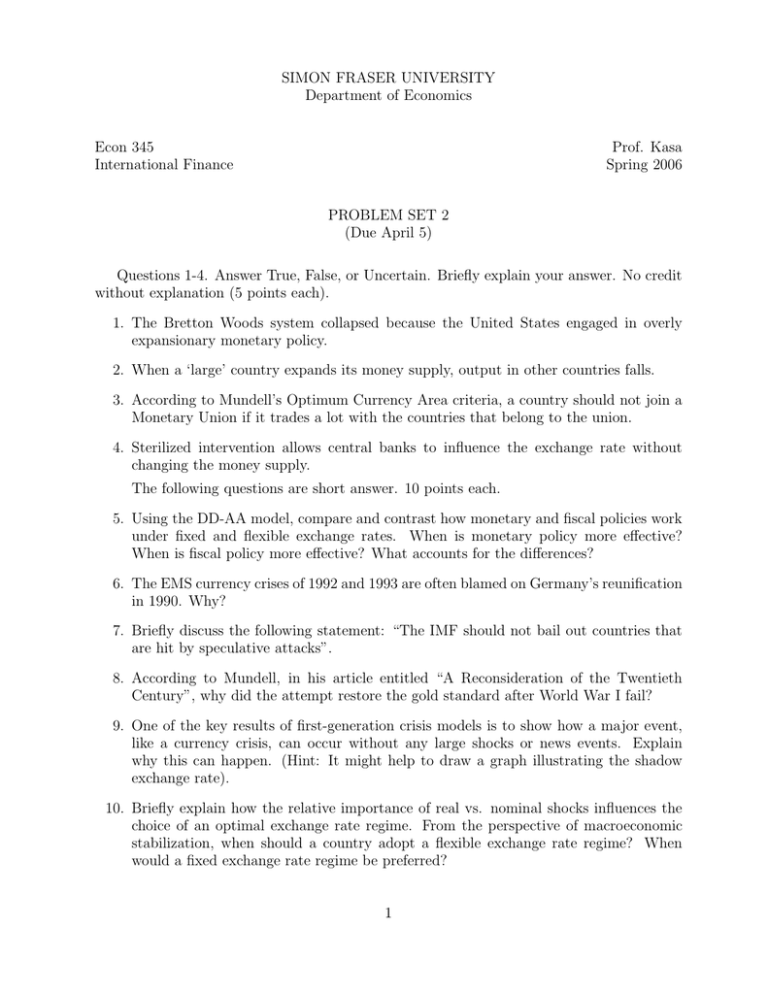
SIMON FRASER UNIVERSITY Department of Economics Econ 345 International Finance Prof. Kasa Spring 2006 PROBLEM SET 2 (Due April 5) Questions 1-4. Answer True, False, or Uncertain. Briefly explain your answer. No credit without explanation (5 points each). 1. The Bretton Woods system collapsed because the United States engaged in overly expansionary monetary policy. 2. When a ‘large’ country expands its money supply, output in other countries falls. 3. According to Mundell’s Optimum Currency Area criteria, a country should not join a Monetary Union if it trades a lot with the countries that belong to the union. 4. Sterilized intervention allows central banks to influence the exchange rate without changing the money supply. The following questions are short answer. 10 points each. 5. Using the DD-AA model, compare and contrast how monetary and fiscal policies work under fixed and flexible exchange rates. When is monetary policy more effective? When is fiscal policy more effective? What accounts for the differences? 6. The EMS currency crises of 1992 and 1993 are often blamed on Germany’s reunification in 1990. Why? 7. Briefly discuss the following statement: “The IMF should not bail out countries that are hit by speculative attacks”. 8. According to Mundell, in his article entitled “A Reconsideration of the Twentieth Century”, why did the attempt restore the gold standard after World War I fail? 9. One of the key results of first-generation crisis models is to show how a major event, like a currency crisis, can occur without any large shocks or news events. Explain why this can happen. (Hint: It might help to draw a graph illustrating the shadow exchange rate). 10. Briefly explain how the relative importance of real vs. nominal shocks influences the choice of an optimal exchange rate regime. From the perspective of macroeconomic stabilization, when should a country adopt a flexible exchange rate regime? When would a fixed exchange rate regime be preferred? 1
